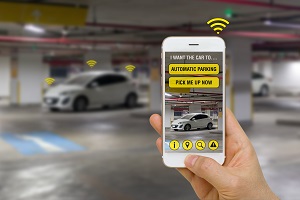Five ways self-drive vehicles could transform our towns and cities
 With hindsight, Chancellor Phillip Hammond could have planned his announcement better. Who could resist comparing driverless cars to what critics see as a driverless government? Lack of spin aside though, autonomous vehicles are important and the announcement welcome.
With hindsight, Chancellor Phillip Hammond could have planned his announcement better. Who could resist comparing driverless cars to what critics see as a driverless government? Lack of spin aside though, autonomous vehicles are important and the announcement welcome.
As with any new technology, the challenges around self-drive cars, or autonomous vehicles, are great and success is uncertain. But with more and more companies and governments throwing their weight behind it, not to take notice would be foolish. Planners and developers need to be on the front foot. Changes ushered in by autonomous vehicles could transform our urban environments. Here are five effects it could have.
1. Urban car parks opened up for development
The country is wrestling with the thorny issue of Green Belt release for new homes. But just think how much of our urban environment is covered by car parks. We build car parks in urban environments for convenience – we want to leave our cars near to our destination. But autonomous cars remove that need. The car can park anywhere, then come to you when needed. Huge car parks could be constructed on out-of-the-way industrial estates, freeing up precious city and town centre land for development.
2. Car ownership falls
The scenario above assumes we continue owning our own cars, but we may not. With no need for drivers, it’s not a big stretch to imagine fleets of autonomous cars available for hire at prices that undercut car ownership. Think Uber on steroids. Some will still want their own car, but for many it will be cheaper, easier, more convenient and safer to simply hail an autonomous taxi. For longer journeys, just hire a car for a few days and see it roll up outside your home or office minutes later. This will reduce the need for residential parking, and allow higher density developments without compromising on garden size or public realm.
3. Need for traditional public transport falls
Trams and trains are effective ways of moving large numbers of people, but they’re also very expensive to build and run. Buses are cheaper, but less reliable. All suffer from the same problem – they don’t go door-to-door. Now imagine an autonomous minibus that picked up and dropped passengers where they actually wanted to go, calculating the quickest route based on who was on board. Or a shuttle service that transported commuters from their homes to the local station or tram stop, removing the need for so much parking at stations. If the pricing is right, traditional buses could become a thing of the past.
4. Electricity demand rises
No-one doubts that the new fleets of autonomous vehicles will be primarily electric, which will require a big upgrade for our creaking National Grid. Vehicles may recharge in all sorts of ways and at all sorts of places. Power from car batteries may also feed back into the National Grid to help deal with spikes in demand, reducing the need for just-in-case power stations. In a few years time, fast recharging facilities may be a real differentiator for people going out. If your retail park doesn’t have sufficent recharging points, you may lose out to a competitor.
5. More effective use of road space
You’ve probably heard of road-trains: multiple lorries or cars wirelessly linked together and travelling along motorways in convoy. As the proportion of autonomous vehicles becomes higher, our ability to safely pack more onto the same roadspace grows. It’s similar to the signalling improvements that have seen a far higher frequency of trains on the London Underground. It means we can increase the volume of traffic on our roads without increasing journey times or congestion – getting more out of the same resource. With transport infrastructure being a major cost of new developments, that’s a big prize. Were there to be autonomous-only roads at some point in the future, junctions could do away with traffic lights and stop signs, further reducing congestion.
What next?
Autonomous vehicles are on the roads now, but it’s early days. Despite the billions being pumped in by industry and governments, they may not live up to expectations. But there is a good chance the future of our roads will be autonomous, and developers who start thinking through the implications now will be in a far better position to reap the rewards in the future.
becg is a sector-specialist, multi-disciplinary communications consultancy for the Built Environment sectors. Find our more about how we can help your business at www.becg.com and follow us @becgUK
Selected industry experts bring you insight and expert advice, across a range of sectors.
Subscribe for free to receive our fortnightly round-up of property tips and expertise
Selected industry experts bring you insight and expert advice, across a range of sectors.
Subscribe for free to receive our fortnightly round-up of property tips and expertise





